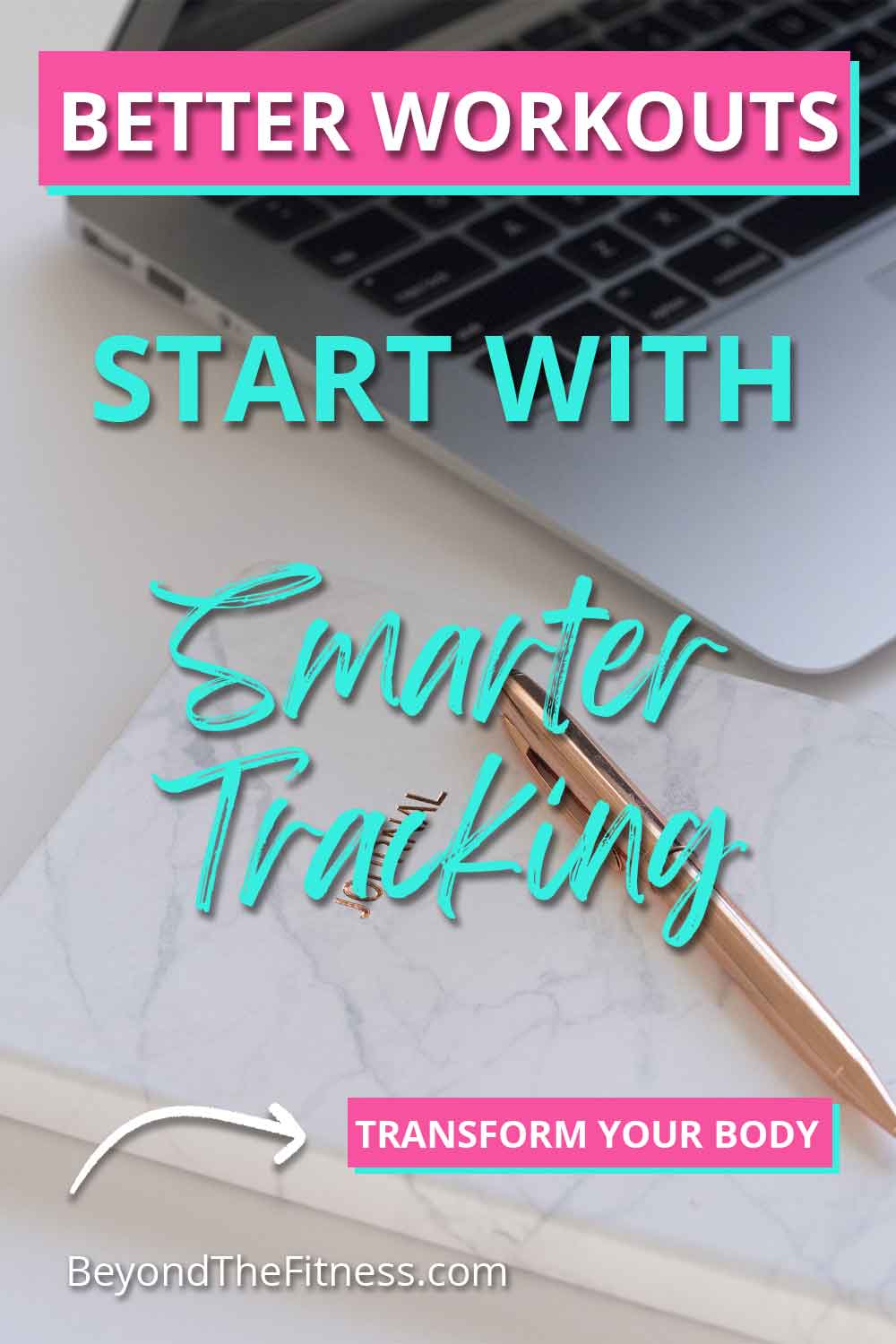If you’re anything like me, staying on top of your workouts can sometimes feel like a juggling act. Between busy schedules and new fitness goals, it’s easy to lose track of what you’ve done and where you’re headed. That’s where a workout tracker comes in. It’s more than just a way to write down what you’ve done—it’s your guide to getting stronger, faster, and healthier.
I’ve learned that tracking my workouts doesn’t have to be complicated. In fact, it can be fun! Let me show you how to use a workout tracker to hack your fitness routine and make every move count.
What Is a Workout Tracker and Why Do I Need One?
A workout tracker is a simple tool that helps me keep a record of my workouts. Whether I use a notebook, an app, or a spreadsheet, it’s where I jot down everything about my fitness routine. This includes exercises, sets, reps, weights, and even how I feel after each session.
Why I Use a Workout Tracker
- It keeps me motivated: There’s nothing more satisfying than seeing how far I’ve come. When I flip through my past workouts, I can see my progress—and it pushes me to keep going.
- It helps me avoid plateaus: If I’m not tracking, I might unknowingly repeat the same workouts and stop challenging my body. Tracking helps me mix things up and keep improving.
- It’s a time-saver: I don’t have to guess what I did last time or try to remember which weights I used. My tracker has all the answers.
How to Start Using a Workout Tracker
Getting started with a workout tracker is super easy. Here’s how I set mine up:
Step 1: Choose Your Format
There are so many options for workout trackers, and you can pick the one that works best for you.
- Pen and paper: A notebook is a classic choice. I like to use a small journal that fits in my gym bag.
- Apps: Fitness apps like MyFitnessPal or Strong make it easy to log workouts on my phone.
- Spreadsheets: If you love customizing things, a spreadsheet lets you create a tracker tailored to your goals.
Step 2: Decide What to Track
I don’t track everything—just the details that matter most to me. Here’s what I include:
- Date: So I know when I worked out.
- Exercises: I write down every move I did, from squats to push-ups.
- Sets and reps: This helps me see how hard I worked.
- Weights: If I’m lifting, I note how heavy the weights were.
- Rest time: Sometimes, I track how long I rested between sets.
- How I felt: Adding a quick note about my energy level or mood gives me a big-picture view of my progress.
How to Use Your Workout Tracker Effectively
Once I have my workout tracker ready, I use it to plan, review, and adjust my workouts.
Plan Ahead
Before heading to the gym, I write down my workout plan for the day. This keeps me focused and saves time during my session.
Review Regularly
At the end of each week, I take a few minutes to look over my tracker. Am I lifting heavier weights? Am I doing more reps? These small wins remind me that my hard work is paying off.
Adjust When Needed
If I notice I’ve been doing the same routine for weeks, it’s time to switch things up. Maybe I’ll add a new exercise or try a different workout split. My tracker helps me spot patterns and make smart changes.
Tips for Making the Most of Your Workout Tracker
Set Clear Goals
Before I start tracking, I think about what I want to achieve. Whether it’s building strength, losing weight, or running faster, having a clear goal helps me decide what to track.
Stay Consistent
Tracking only works if I stick with it. I try to log my workouts as soon as I’m done so I don’t forget the details.
Keep It Simple
I don’t overcomplicate things. A workout tracker doesn’t have to be fancy—it just has to work for me.
Benefits of Using a Workout Tracker for Women
As a woman, I’ve found that tracking my workouts has some unique benefits.
Boosts Confidence
Seeing my progress in black and white reminds me that I’m capable of amazing things. When I notice that I can lift heavier or run longer, it’s a huge confidence boost.
Supports Hormonal Health
Tracking helps me sync my workouts with my menstrual cycle. For example, I might focus on strength training during my follicular phase and prioritize recovery during my luteal phase.
Helps Avoid Overtraining
By keeping an eye on how often I’m working out and how I feel, I can spot signs of overtraining and take rest days when needed.
Fun Ideas to Make Tracking More Enjoyable
If I ever get bored with my tracker, I like to mix things up:
- Use stickers: Adding colorful stickers or stamps to my journal makes it feel more fun.
- Set mini-challenges: I’ll write down mini-goals like “Do 10 pull-ups this month” and track my progress.
- Celebrate wins: When I hit a goal, I treat myself to something special, like new workout gear.
Workout Tracker Mistakes I’ve Learned to Avoid
When I first started tracking, I made a few mistakes. Here’s what I’ve learned to avoid:
- Skipping rest days: I used to think I had to fill every day with a workout. Now, I track my rest days too, because recovery is just as important as training.
- Focusing only on numbers: It’s easy to get caught up in sets and reps, but I remind myself to pay attention to how I feel, too.
- Not reviewing regularly: If I don’t look back at my tracker, I miss out on valuable insights.
Advanced Tips to Maximize Your Workout Tracker
Once you’ve mastered the basics of using a workout tracker, it’s time to level up. These advanced tips will help you get even more out of your tracking experience and take your fitness results to the next level.
Mix Metrics for a Complete Picture
While sets, reps, and weights are great to track, I’ve found that adding a few extra metrics gives me a fuller view of my progress. Here’s what I include:
- Heart rate: Tracking my heart rate during cardio sessions shows me how hard I’m working.
- Calories burned: For those focused on weight management, tracking calorie burn can be super helpful.
- Sleep quality: Good sleep is essential for recovery. If I’ve had poor sleep, I might adjust my workout intensity.
Experiment with New Workout Styles
One thing I love about tracking is that it encourages me to try new things. For example, I’ll test out different styles of training and log how they feel:
- Circuit training: Great for combining strength and cardio in one session.
- High-Intensity Interval Training (HIIT): Tracking my intervals helps me push harder and recover smarter.
- Yoga or Pilates: Even low-impact workouts deserve a place in my tracker.
Track Recovery Metrics
Recovery is as important as the workout itself. To stay on top of my recovery, I track:
- Resting heart rate: A higher resting heart rate can mean I need more recovery.
- Muscle soreness: If I’m feeling sore, I’ll adjust my workouts accordingly.
- Hydration: Staying hydrated improves my performance and recovery.
How to Make a Digital Workout Tracker Work for You
Digital tools have made tracking workouts easier than ever. If you’re tech-savvy (or want to be), here are some ways to maximize your digital workout tracker:
Use Wearable Tech
I’ve found wearable devices like fitness watches and trackers incredibly helpful. They track steps, calories, heart rate, and even sleep. Syncing them with an app makes tracking seamless.
Try Apps with Built-In Programs
Many apps, like Fitbod or Nike Training Club, not only let me log workouts but also provide personalized workout plans. This keeps my routine fresh and exciting.
Create Automated Reports
Some apps and spreadsheets can generate progress reports. I love reviewing these weekly or monthly to see trends and celebrate wins.
You Might Be Interested In: Learning more about The Complete Smoothie Detox & Weight Loss Program
Using a Workout Tracker to Support Nutrition Goals
Fitness and nutrition go hand in hand. While my workout tracker focuses on my exercises, I also include notes about my meals and snacks. Here’s how I connect the two:
Pre- and Post-Workout Meals
I track what I eat before and after workouts to see how it affects my performance and recovery. A good pre-workout meal gives me energy, while post-workout nutrition helps with muscle repair.
Hydration Logs
Staying hydrated is key, so I jot down how much water I drink each day. If I notice my performance dipping, dehydration could be the culprit.
Linking Progress to Nutrition
When I see progress in my tracker—like lifting heavier weights—I reflect on my nutrition. Am I getting enough protein? Are my carbs giving me the energy I need?
Creating Workout Challenges with Your Tracker
Sometimes, a good challenge is just what I need to stay motivated. Using my workout tracker, I set up fun challenges that keep me pushing toward my goals.
Weekly Goals
Every week, I set a small goal, like increasing the weight I lift by 5 pounds or running for 10 extra minutes.
Monthly Milestones
For longer challenges, I use my tracker to build toward a big milestone, like completing a half-marathon or mastering a pull-up.
Friendly Competitions
I’ve even used my tracker to compete with friends. We’ll set a goal—like the most steps in a week—and use our trackers to see who wins.
How to Stay Motivated When Tracking Feels Hard
Even though tracking helps me stay consistent, there are days when it feels like a chore. Here’s what I do to keep going:
Focus on the Why
Whenever I feel like skipping a tracking session, I remind myself why I started. My tracker isn’t just about numbers—it’s a tool that helps me reach my dreams.
Reward Yourself
Sometimes, I’ll set up a reward system. For every 10 workouts I track, I treat myself to something fun, like a new pair of leggings or a coffee date.
Simplify When Needed
If life gets busy, I scale back my tracking. Instead of logging every detail, I might just write down the basics, like the workout type and duration.
Common Questions About Workout Trackers
Even though I’ve been tracking for a while, I still run into questions. Here are some things I’ve figured out along the way:
How Often Should I Update My Tracker?
I update my tracker right after my workout, while everything’s fresh in my mind. If I forget, I’ll do it before bed.
What Happens If I Miss a Few Days?
Life happens! If I miss tracking for a few days, I don’t stress. I just pick up where I left off.
Should I Share My Tracker with a Coach?
Absolutely! Sharing my tracker with a coach or trainer has been super helpful. It gives them a clear picture of my progress and helps them create better workout plans for me.
Inspiring Ideas for Personalizing Your Workout Tracker
Your workout tracker should reflect your personality and goals. Here are some ways I’ve made mine my own:
Add Inspirational Quotes
I like to start each page of my journal with a quote that motivates me. It’s a small touch that keeps me inspired.
Use Color Coding
I assign different colors to different types of workouts—blue for cardio, red for strength, and green for recovery days. It makes my tracker easy to scan.
Create a Vision Board
I keep a small section of my tracker for photos or clippings that inspire me. Whether it’s a picture of a race I want to run or a new fitness move I’m learning, it keeps me excited about my journey.
Turning Your Workout Tracker into a Long-Term Habit
The real magic of a workout tracker happens when it becomes part of my daily routine. Here’s how I’ve made tracking a habit that sticks:
Set a Reminder
I set an alarm on my phone to remind me to update my tracker every evening.
Make It Part of My Warm-Up or Cool-Down
Sometimes, I fill out my tracker during my warm-up or while stretching after a workout.
Celebrate Consistency
Every month, I look back at my tracker and celebrate the fact that I stuck with it. It’s a simple way to stay proud of my efforts.
Why I’ll Never Stop Using a Workout Tracker
Over the years, my workout tracker has become more than just a log of exercises. It’s a record of my journey, a source of motivation, and a tool for growth. Whether I’m hitting new personal records or taking time to recover, my tracker is there to guide me.
No matter where you are in your fitness journey, a workout tracker can be your secret weapon. With a little creativity and consistency, it’ll help you stay on track, push through challenges, and achieve your biggest goals.
Final Thoughts
Using a workout tracker has completely changed the way I approach fitness. It’s not just about writing things down—it’s about learning, growing, and celebrating my progress. Whether you’re just starting your fitness journey or you’ve been at it for years, a workout tracker can be your best workout buddy.
Let’s grab those journals and start tracking! It’s time to take control of our fitness journey, one workout at a time.







